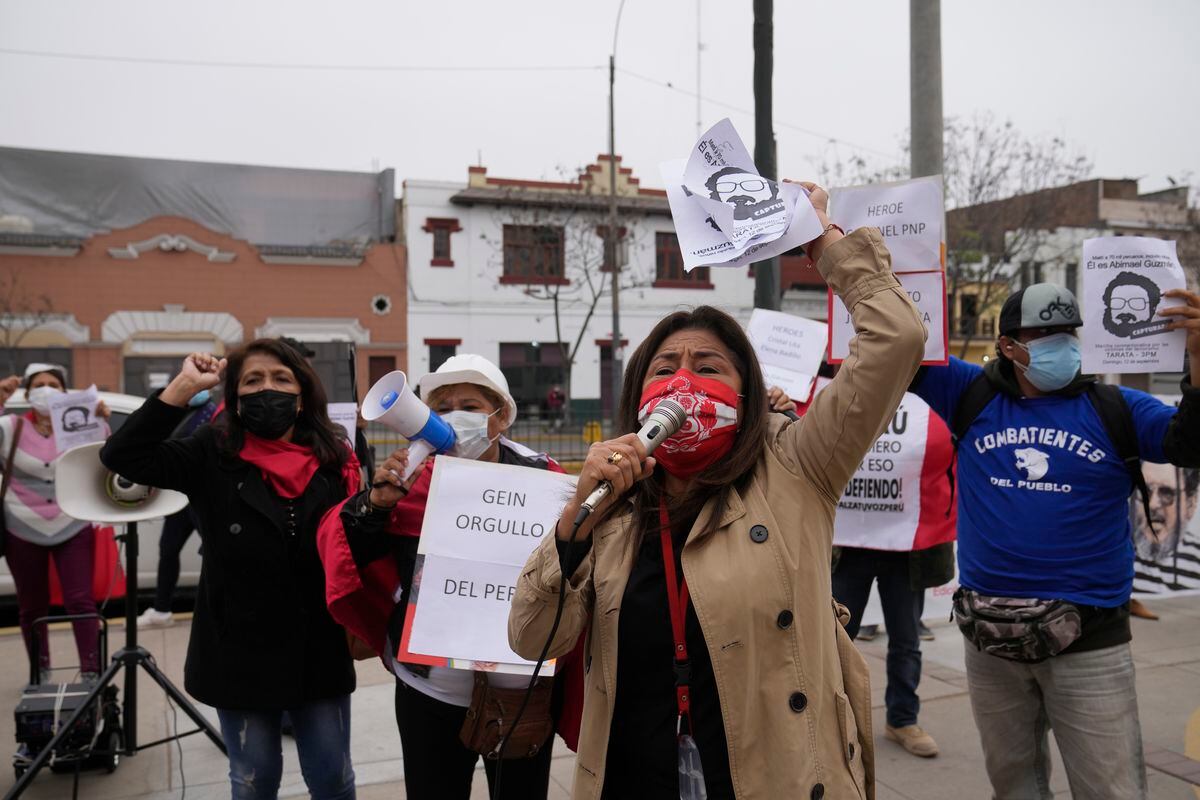
[ad_1]

The Lima Art Museum has repatriated 31 works of folk art from the United States. This was in 2017. The counterterrorism police, seeing the paintings, asked the prosecution for an investigation for terrorism apologies. The paintings depicted people displaced by the violence of the 1980s and 1990s and the Shining Path and armed forces attacks on the Sarhua peasant community in Ayacucho, the region where Abimael Guzmán’s uprising began. Months later, a newspaper headlined on the front page: Pro-Senderista art exhibition interrupted”. After an anthropological investigation, the museum removed them from customs. Shortly after, the Ministry of Culture declared this traditional art cultural heritage to compensate those affected.
This is just one example of the pernicious shadow that Guzmán, who died last Saturday at the age of 86, has cast on Peruvian public life. Retired politicians and military personnel often encourage fear of terrorism and the defunct Maoist organization, even though it was beheaded in 1992 and its leaders sentenced to life imprisonment in a military prison. The strategy of fear is used because it functions as a mechanism of political control, ”comments historian Cecilia Méndez, professor at the University of California at Santa Bárbara. Even after death, he is still present. Some are launching the theory that the greatest terrorist in Peruvian history is still alive and has been freed by the government of Pedro Castillo.
More information
Some vestiges of the Shining Path remained active, although in 1999 they abandoned Guzmán’s goal of “overthrowing the state”. Its new leaders have chosen to devote themselves to extortion and drug trafficking. “It was a terrorist sect founded on the cult of Guzmán’s personality and on a dogmatic Leninist and Maoist reading of political power. For more than 20 years, no armed group has supported Guzmán or committed terrorist acts on his behalf. Despite this, we hear politicians, opinion leaders and a majority of the press talking about the hikers as if there were armed columns attacking left and right “, tells Méndez, author of the chapter Routes of terrorism in Peru, recently published in The Cambridge History of Terrorism.
The historian explains that during these two decades she seeks to silence – by stigmatizing them as “terrorists” – political opponents, social leaders and those who question the status quo, “by even censoring production artistic, ”she adds. This was the case for paintings held at customs.
The historian José Ragas underlines that, within the framework of the specter of terrorism, one strategy (“crude, but coherent”) consisted in diffusing adulterated images of public figures or politicians of the left to disqualify them. They are shown next to Guzmán or with the hammer and sickle – the Shining Path icon. “In January 2018, Natalia Majluf, then director of the Lima Art Museum, was unfairly accused of advocating terrorism, and an image of her circulated alongside a portrait of Abimael Guzmán, while the original photo frame corresponded to Simón Bolívar, ”recalls the professor from the Universidad Católica de Chile.
Ragas points out that the same is happening with left-wing politicians like former presidential candidate Verónika Mendoza, and recently with Prime Minister Guido Bellido: his critics have released doctored photos in which they add the terrorist leader. Méndez warns that the specter of terrorism has taken on a new intensity when President Castillo assumes the government: “With the aggravating circumstance that the conservatives are joined by liberal or even progressive opinion leaders”.
For the university professor, the recurring use of the alleged “terrorist threat” occurs because there has been no reconciliation process in the country, despite the efforts of the Truth Commission, an entity that has attempted to clarify the crimes and unveil a common history. “Guzmán died without apologizing and Fujimori is serving his sentence without regretting his crimes,” he describes. “This long period of violence has left very real traumas on people. Instead of promoting their overcoming, trauma is used politically, manipulating fear, government after government ”.
Military in political life
The Truth Commission reported that the violence claimed more than 69,000 lives and that the Shining Path was responsible for more than half of them. In turn, the police killed thousands and more than 20,000 disappeared. On the other hand, the Fujimori regime used the fight against the Shining Path as a pretext for detaching the army to assassinate opponents, including union and university leaders. Dozens of soldiers were tried for human rights violations between 1980 and 2000, and soldiers and police who fought terrorism came to parliament in right-wing and far-right parties.
“The right has fostered a post-conflict story that focuses on the Shining Path attacks with an emphasis on how they were defeated, and leaves out problematic elements such as the massacres carried out by the military: this does not save lessons for the future, “says anthropologist Carlos Ernesto Ráez. According to the researcher, conservative groups tacitly associate the free market economic model – imposed after Fujimori’s coup in 1992 – with victory on the Shining Path. “This is why anyone who questions the economic model is classified as pro-senderista or terrorist,” he notes.
In this climate, a prosecutor must decide what to do with Guzmán’s remains. The opposition hopes they will be cremated to avoid a possible site of worship for the sectarian and violent ideology he has created. The terrorist’s widow claimed his body. It is to be decided. Whatever happens, its shadow will continue to hang over Peruvian news.
Subscribe here to newsletter of EL PAÍS América and receive all the informative keys of the current situation in the region
Source link
 Naaju Breaking News, Live Updates, Latest Headlines, Viral News, Top Stories, Trending Topics, Videos
Naaju Breaking News, Live Updates, Latest Headlines, Viral News, Top Stories, Trending Topics, Videos